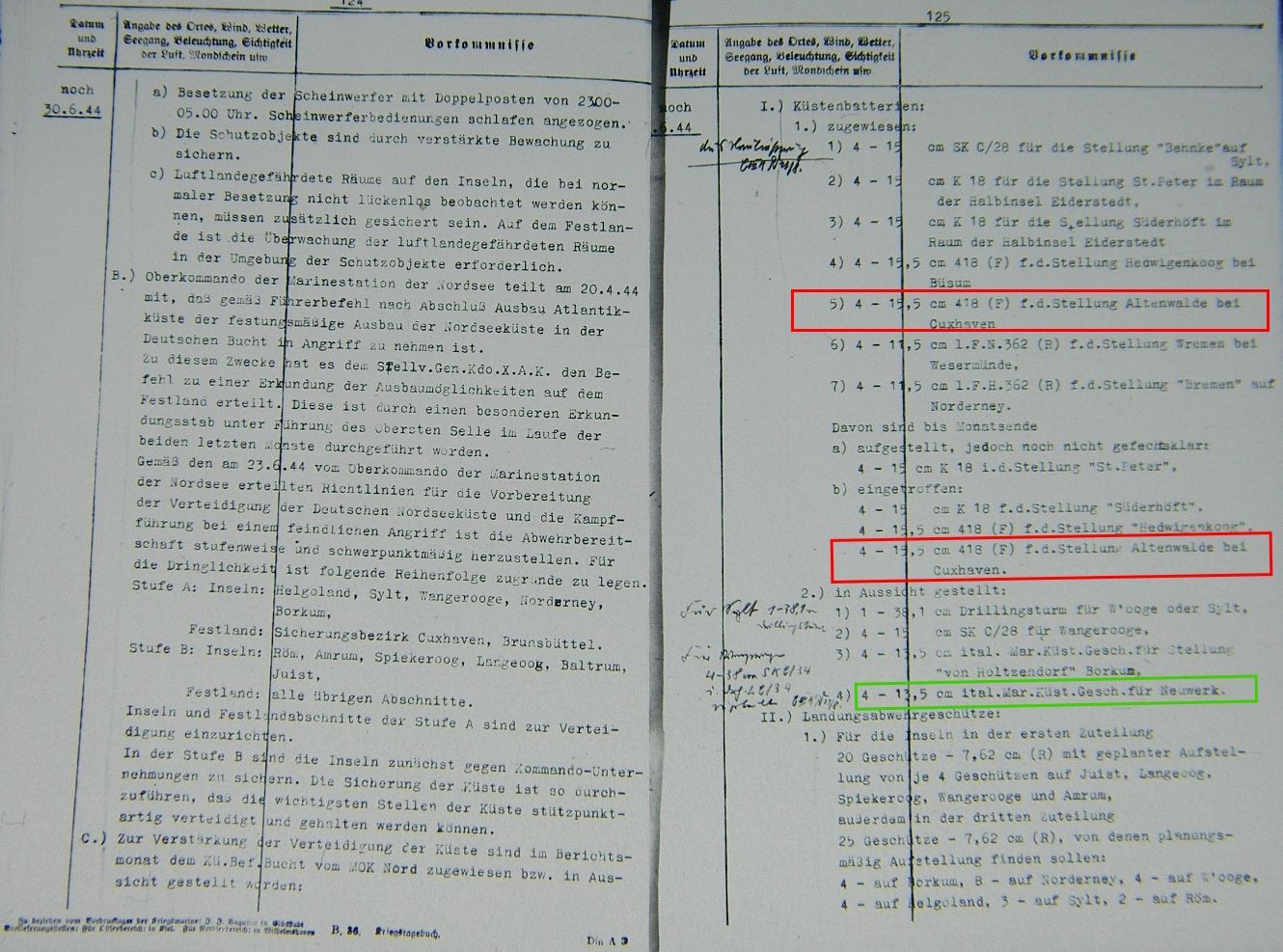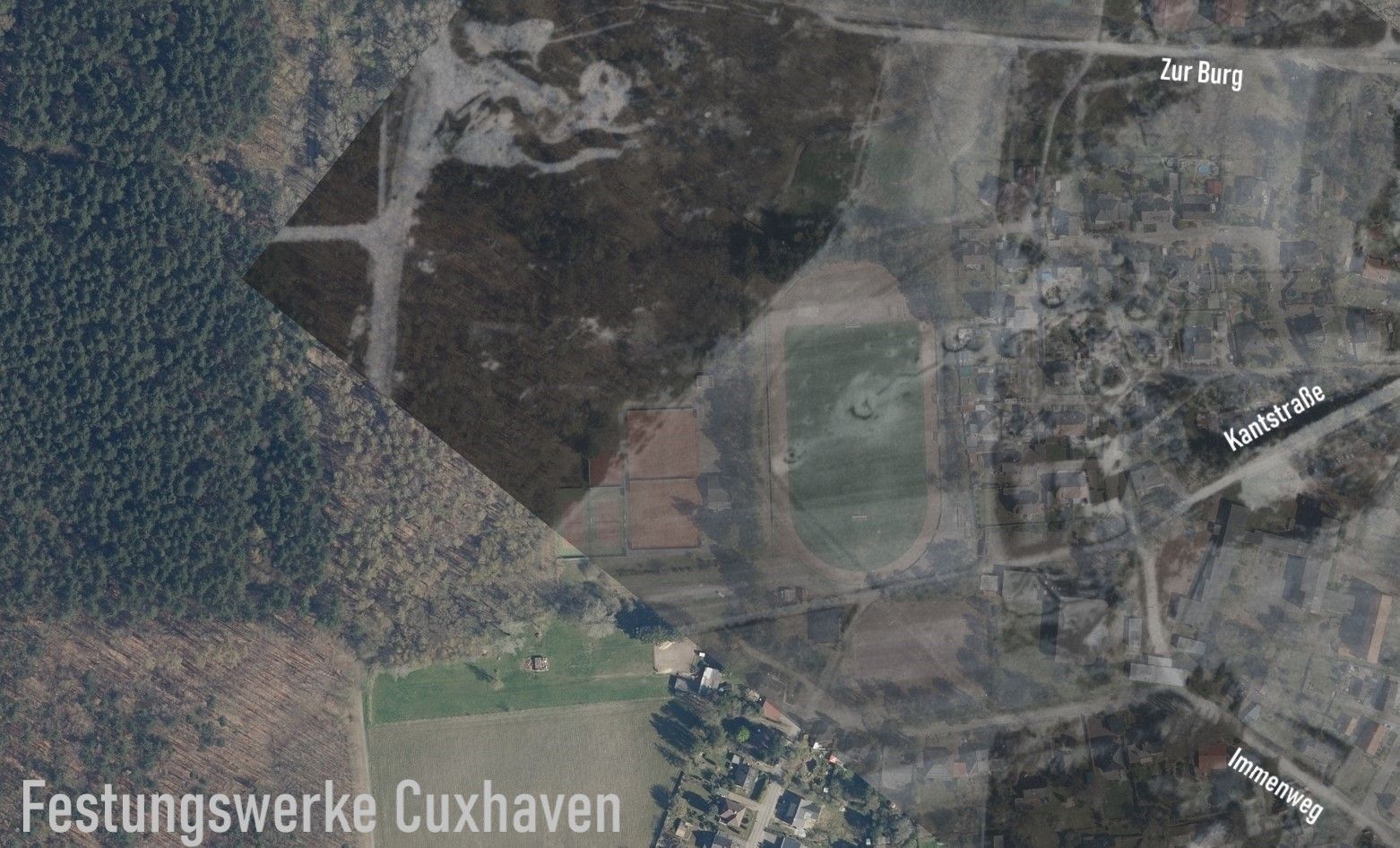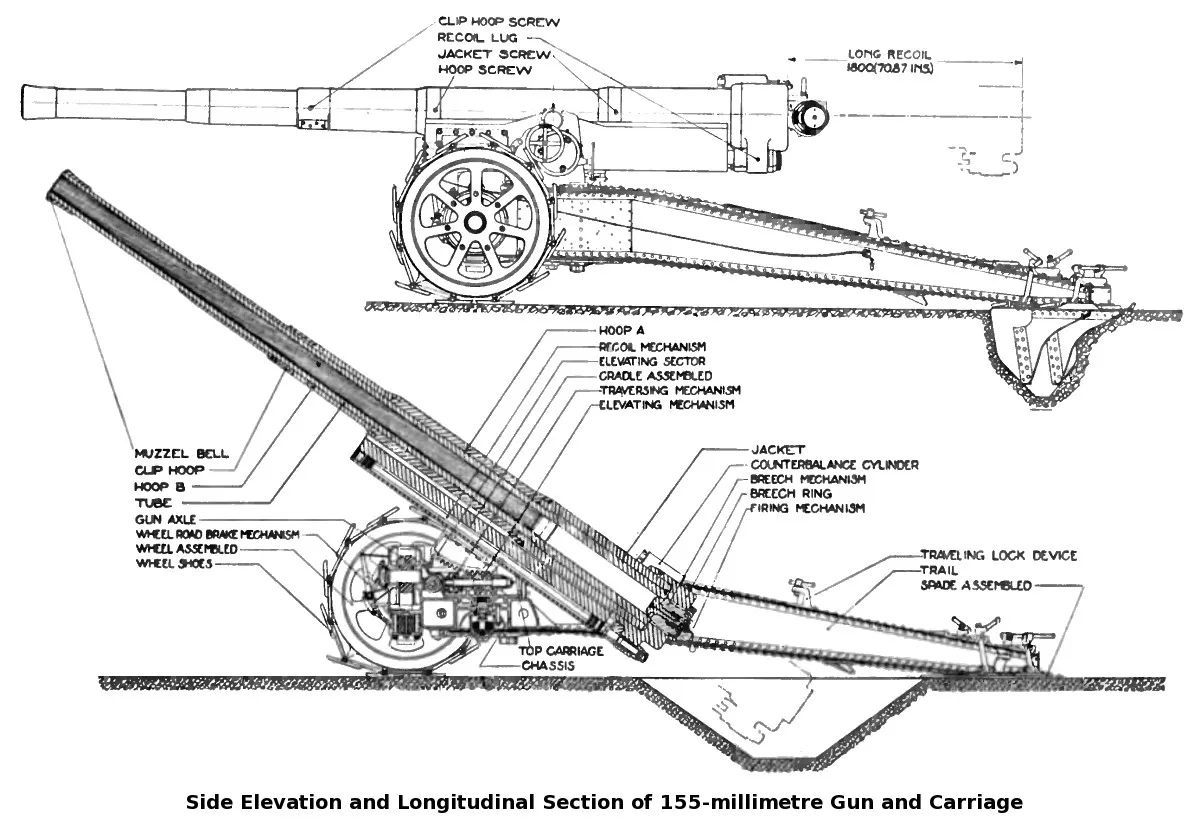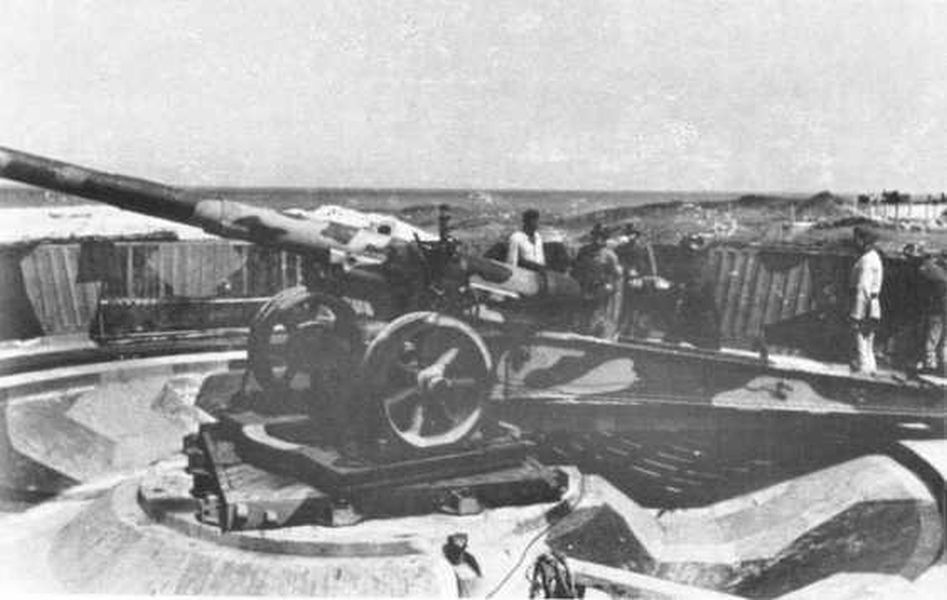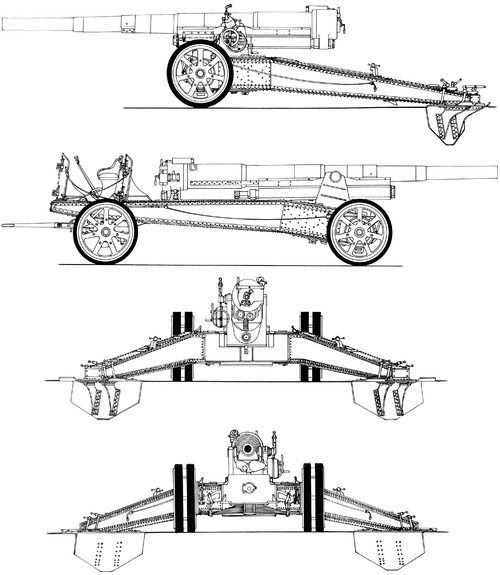
With the order of the High Command of the North Sea Naval Station on April 20, 1944, the military expansion in the German Bight began following instructions from Berlin. This step was taken because an invasion of the Dutch and German North Sea coasts by the Allies could no longer be categorically ruled out. It was then decided to develop the affected coastal strip into a fortress with various construction measures in order to be able to fend off a sea-side attack if necessary. These included bunker construction, barbed wire and mine fields, the construction of ring positions, but also the construction and expansion of heavy gun emplacements. In Altenwalde, among other things, an artillery position was planned between the streets "Zur Burg" and "Immenweg" on what is now the sports field. The position consisted of four 15.5 cm K 418(f) captured guns from French production. They stood on a frame that was pivoted in a bed. The battery was reported ready for use as early as November 1944, but it was never used. According to contemporary witnesses, the guns were withdrawn at the end of the war in April 1945 and assigned to a combat group for use against advancing Allied troops in the Elbe-Weser-Ems region.
Extract from the war diary of the Commander of the Security of the North Sea/German Bight dated 30 June 1944
Photo left:
- Round concrete base (An der Schonung), possibly for an unknown gun or measuring device.Flak battery - Zur Burg15.5 cm. Artillery battery AltenwaldeThree building sites (Zur Burg), probably battery Hossfeld.
What: MB
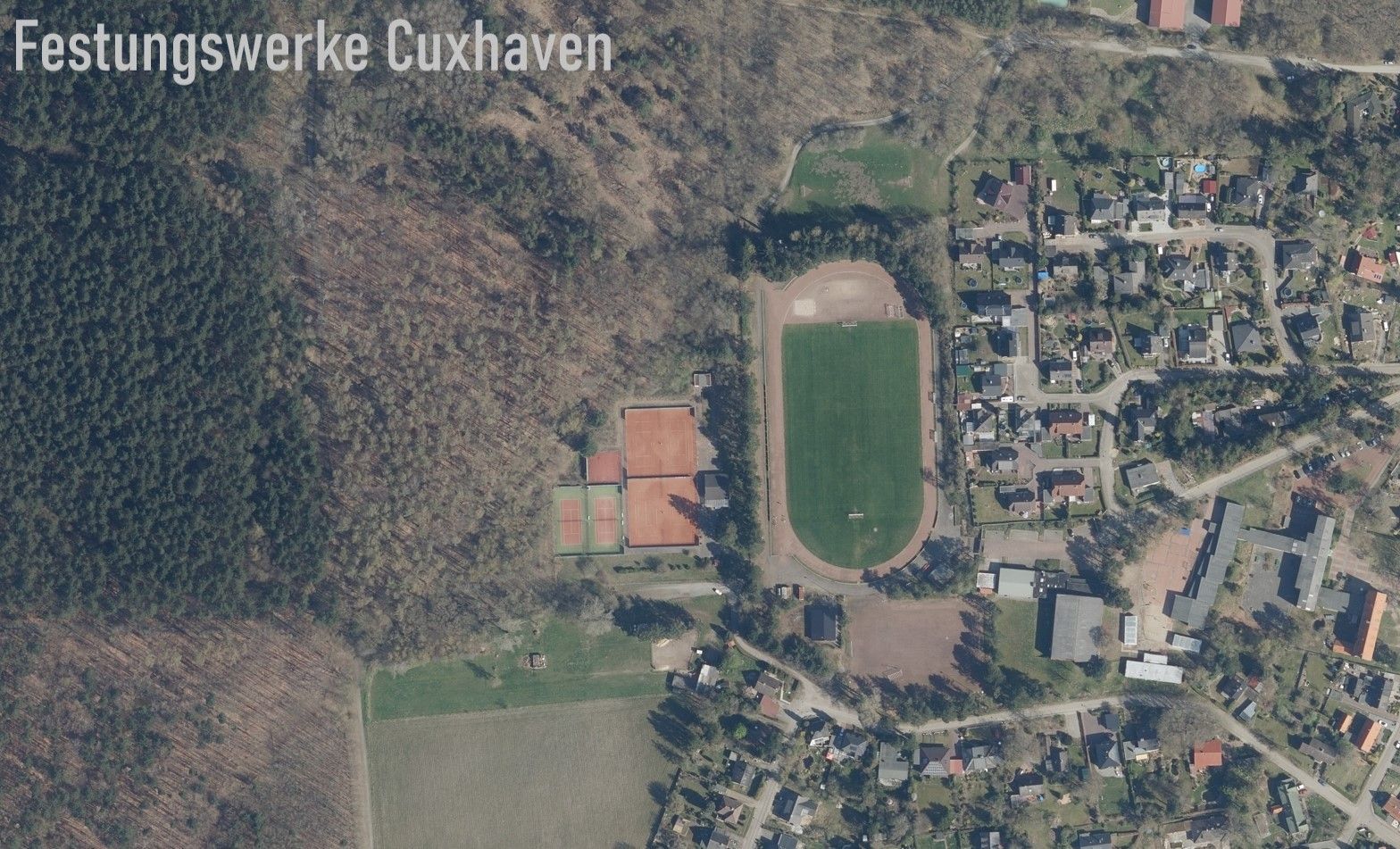
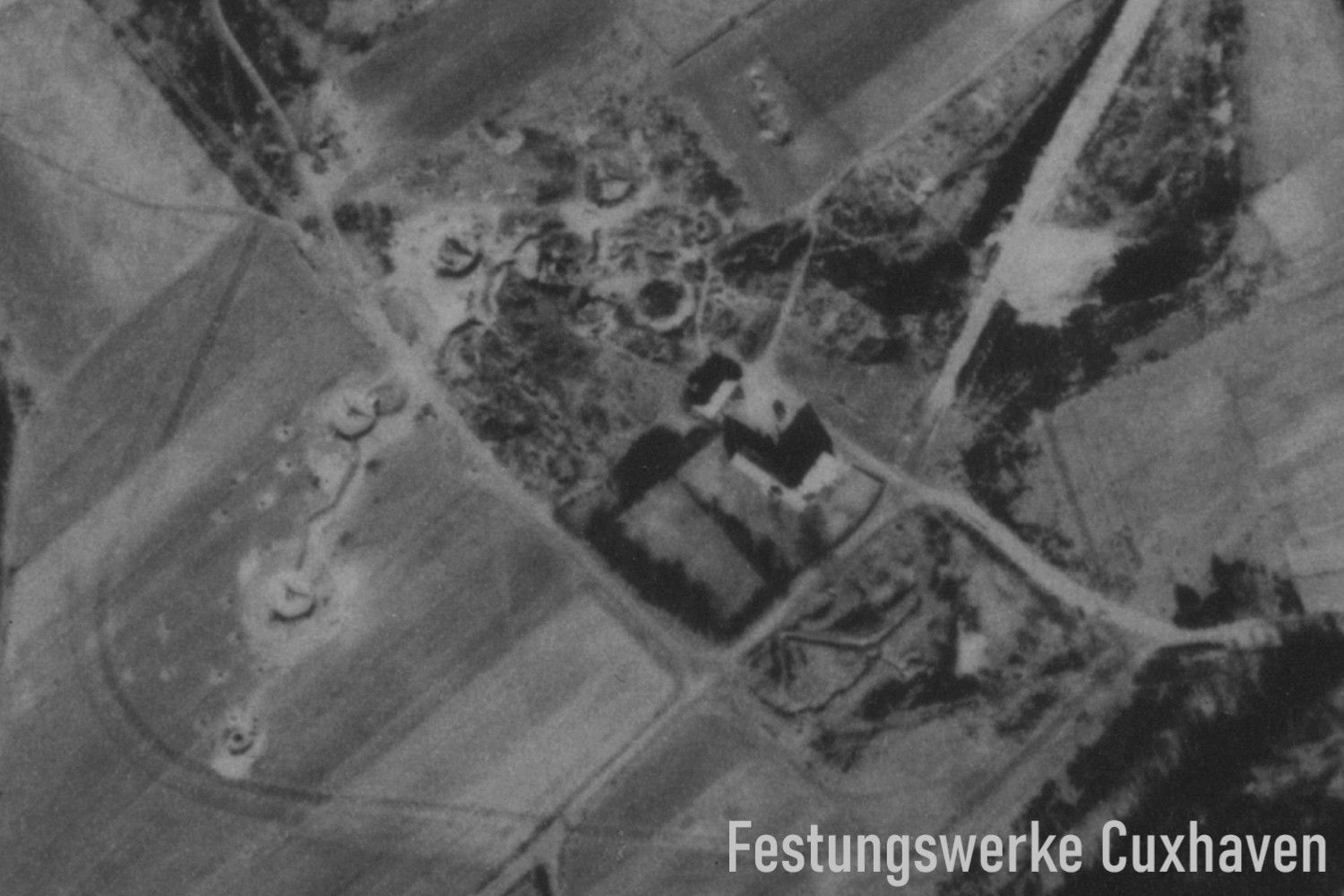
The battery was located in the area of today's sports field behind the Altenwalder Schue and extended into the current Kantstraße settlement.Source: MB
Photo left:
The position was built in a slightly angled shape. The four mobile guns each stood in a concrete bed, where they were attached to a rotating frame. In the surrounding area there were various trenches, splinter protection walls, foxholes, ring positions and a bunker. The battery was probably surrounded by a fence. Source: Gerd Wildfang, MB
The structure with the guns is similar to the Maisy Battery in Normandy/France.
The 155 mm GPF (Grande Puissance Filloux) used in Altenwalde was a French-made field gun that was used in the First and Second World Wars. The Wehrmacht captured around 449 guns of this type in 1940 and used them in some artillery units under the designation 15.5 cm Kanone 418(f). It was later used as a coastal gun on the Atlantic Wall. The gun weighed 11,700 kilograms on the march and could fire 43 kilogram projectiles up to 19,500 meters.



